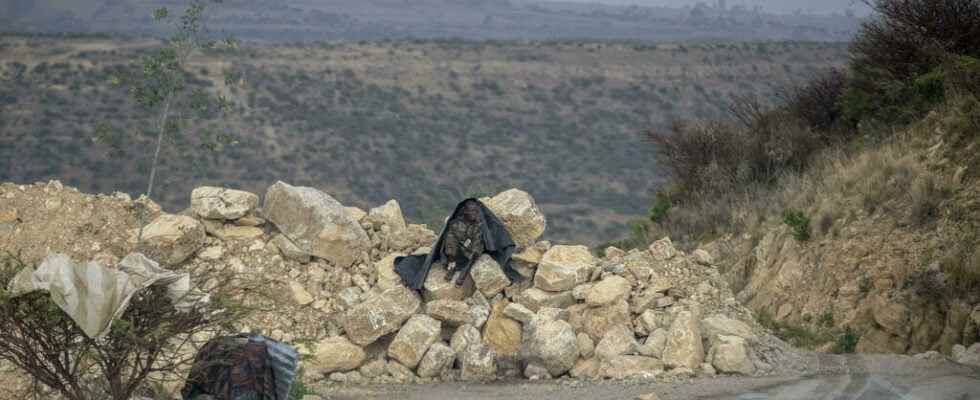Systematic raids, assassinations, forced displacements, disappearances, arbitrary detentions: Amnesty International and Human Rights Watch denounce a new wave of abuses and ethnic violence against civilians in western Tigray. Jean-Baptiste Gallopin is a consultant to Amnesty’s Crisis Response Unit, and one of the authors of this survey. Interview.
RFI: What does this new wave of ethnic violence against Tigrayans that you have documented consist of?
Jean-Baptiste Gallopin: At the beginning of November, militiamen from the Amhara region, (allied with the Ethiopian armed forces, editor’s note), known in particular under the name of Fano, carried out roundups in the towns of Adebai, Humera and Rawyan, in western Tigray, in the aim to arrest and detain any men they could find. Later in November, these Amhara forces carried out further roundups, this time arresting the women, children and the elderly who continued to live in these towns. They put them in trucks to send them east, towards the Tekezé River, which marks the border between the areas controlled by the Amhara forces and the areas controlled by the Tigray forces.
Can you describe for us how these roundups were carried out?
In Adebai for example, Amhara militias arrived in vehicles and asked the men to assemble in the church, claiming a meeting, as it was a religious holiday. Then they started arresting the men in that church. They also attacked those who tried to escape. Several witnesses told us of family members killed while fleeing in panic. A witness remembers seeing bodies all over the city.
►Read also: In Ethiopia, the city of Dessie partly destroyed during the last fighting
Several also told us that the victims could not be buried and remember the smell of death that reigned in the city for the following days. Regarding the roundups that targeted women, children, the elderly and the sick, family members told us that they were forced to burn their property and personal effects before being loaded. in trucks without food. Since they were kicked out of these trucks, their families have lost contact with them.
Do we know how many people were forcibly displaced in this way?
The UN reports 10,000 people have arrived in recent weeks east of the Tekezé River, but it is not known if this represents all of the people who were put in these trucks. And the members of these families with whom we spoke have no news of their relatives today.
What happens to the recently rounded up men?
This is one of our main sources of concern. They were placed in often improvised detention centers, and in appalling conditions. I was able to interview people who escaped in mid-November. They say that there were between 80 and 200 people per room of 12 or 16 m2 and that deaths are frequent there. One of them told me that in his cell, seven people had died during the three months of his detention due to ill-treatment, torture and also lack of water and medical care. This former prisoner who escaped even when asked to load the bodies of other detainees onto a truck told me that he estimated that around 30 people had died during his stay in the prison he was in. . We are concerned for the fate of these prisoners, as they have so far survived on food provided by their families, who have now been expelled from the area. It is feared that they will die of hunger.
These roundups are not the first. But are they different from what had been documented until here ?
It is important to remember that this is not the first round-ups, but a wave of atrocities in a region which has been the scene of atrocities among the worst of this conflict. We have documented cases of detention – probably thousands of Tigrayans – in different detention centers over the past year. But what sets this latest wave apart is the systematic aspect. The effort that is being made to stop and detain everyone, in fact, is really a rise in power compared to what we have seen before. These events represent crimes of war and against humanity, and without urgent action by the international community, the Tigrayans who remain now face very serious risks.
The UN Human Rights Council is meeting this Friday in Geneva urgently to discuss the crimes committed by all the belligerents in Ethiopia. What do you expect from it?
It is considered that these latest roundups should really sound the alarm on the situation of Tigrayans in Western Tigray, and more generally on the inaction of the international community in this conflict, which allowed the perpetrators of these crimes to continue. We are now calling for the urgent establishment of an international mechanism to investigate human rights violations committed in Tigray since the start of the conflict, under the aegis of the Human Rights Council. of ONU.
►Read also : On the front page of the Africa press review, the war behind closed doors in Ethiopia (09/12)
This international mechanism could in particular make it possible to preserve the evidence of these crimes, in the face of efforts being made to hide the scale of the atrocities underway. This international mechanism would also make it possible to identify the culprits of these atrocities. The UN Security Council is also called on to put the conflict in Ethiopia on its official agenda, since it still has not done so since the start of the conflict, despite the seriousness of the human rights violations. that were committed in Ethiopia.
URGENT: Amhara militias carrying out a wave of killings, detentions and mass expulsions in Western #Tigray. “They were shooting at anyone who was behind. [My uncle] wasn’t even running… they still shot him, ”recalled a survivor. https://t.co/Io0TtS1FAc
– joanne mariner (@jgmariner) December 16, 2021
